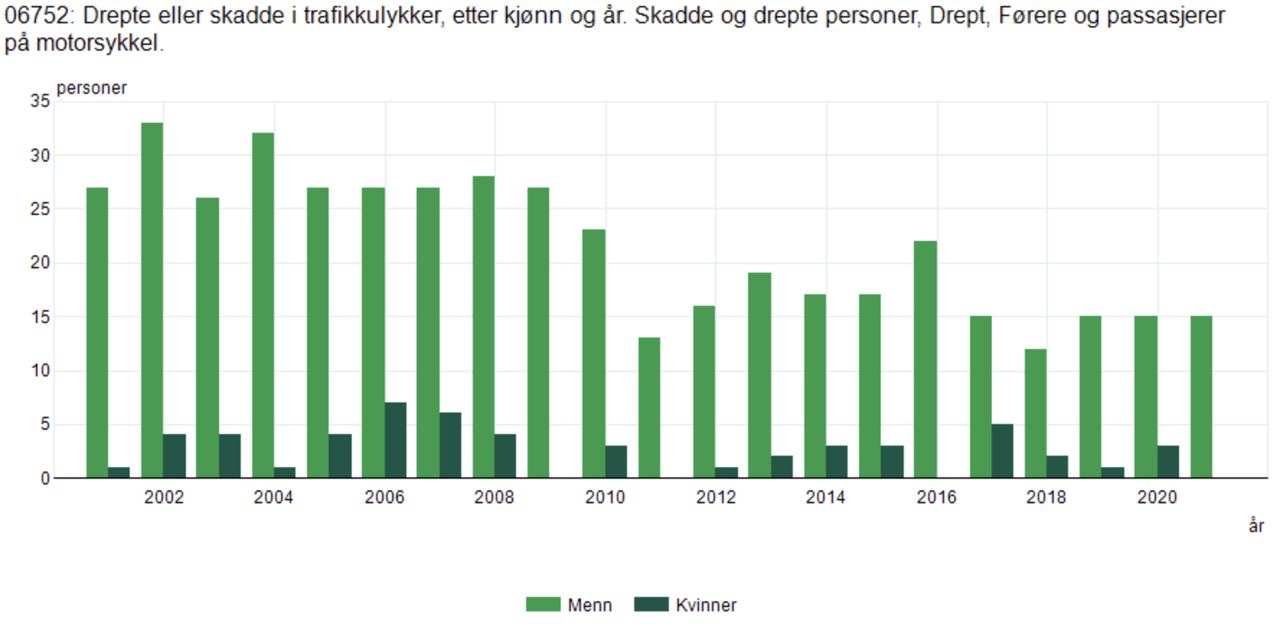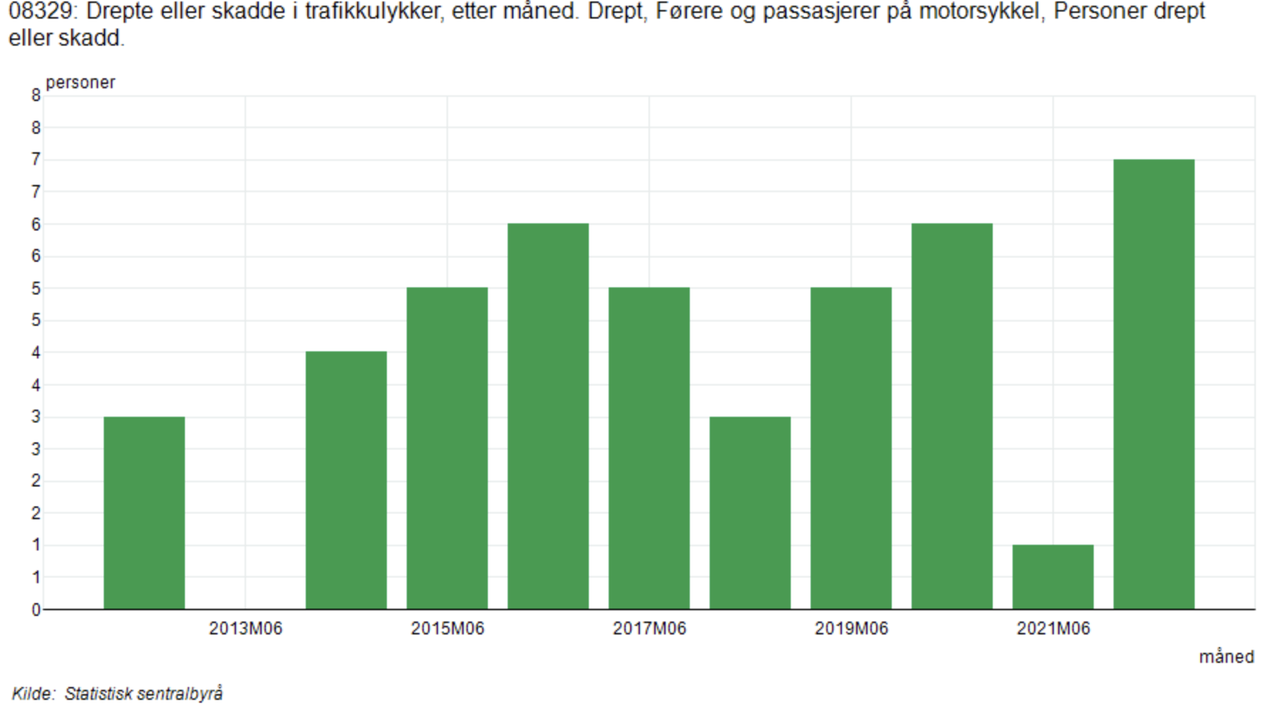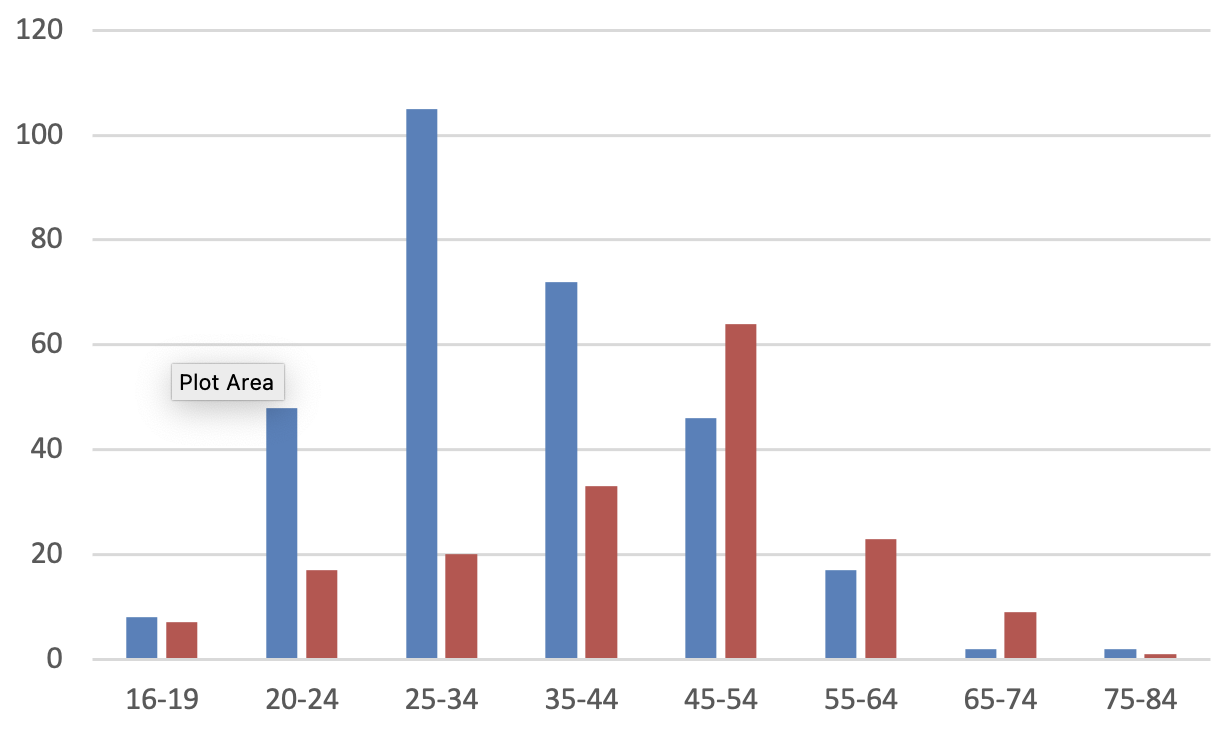I'm sceptical to the narrative that Norwegian motorcycle accident numbers are "skyrocketing". The numbers are fairly small (around 20 killed per year), and as such it is hard to statistically understand the reason if any, or to draw conclusions from a year-to-year variation.
There are some long term trends, and they are showing the opposite. Here are the number of people killed on motorcycles, the two colours are men and women respectively.

This June has been particularly bad, with 7 killed. The question is whether this is an anomaly (and as such is of no further consequence) or if it is a trend. We can look at the numbers for June from 2012 onwards:

So, even if this June is the highest for the period, it is not "skyrocketing". Rather, it seems that it is within the expected variation for the numbers.
However, it is extremely important to look at how people die, even if we don't accept that the numbers are increasing. Generally, motorcycling (in Norway) is around 6.7 times more likely to lead to a fatality per person-kilometer driven than cars. Those numbers aren't as available as we break down on demographic variables, which makes further analysis more difficult.
However, it is clear that middle-age plus people are more likely to die while riding motorcycles than younger people. I am unsure if this is because they are worse riders, or because they're simply riding more. It seems to me that most people I meet on two wheels are past family raising age, and as such it would make sense if they were also more likely to have fatal accidents.
I looked at the number of killed motorcyclists by age, and how the development from the period 2000-2010 compared to 2011-2021:

This shows significant decrease for the demographics below 45, and significant increase for those above. I have been unable to find good numbers on the development in the demographics for riders, but all evidence I have is that the trend is that older riders ride longer trips on heavier bikes. That would go a long way to explain why the 30-year old going off the road on his litre bike is replaced by the 50 year old on his GS in the statistics.
Through conversations with the researchers in this area, I've learned that the most deadly accident type is running out of road in left hand turns on country roads. Speed is not seen as the main contributing factor, and it seems that the main problem is people freezing up somewhere in the curve. Missing a right hand turn just gets you into the wrong lane, which is fine unless there's traffic coming the other way, while left hand turns just have the barrier and trees.
This problem can only be mitigated through training, and in my opinion, more training is the only relevant response to the trend of more older riders being on the road, and therefore at risk of death or serious injuries. Understanding that a motorcycle can handle way sharper turns than most of us are prepared to go into can give the confidence to look through the turn and push harder on the handlebars, rather than panicking and hitting the breaks.
So whenever I read about motorcycling accidents, I try to figure out what kind of accident it was, to understand if they are contributing to the trend. In June, one accident was a guy apparently falling off his bike (which continued for 900 meters down the road), one kid losing control while doing a wheelie in traffic, hitting a car in his own lane and getting pushed into the opposing lane where he had an unfortunate run-in with another car, and one guy losing control of his bike on a straight. Those are the three that I've managed to find the reason for among the seven in June, and none of those are the kind of accident that, on average, kills most of us. So, I'm not that worried.
We can assume that there are 200,000 active motorcyclists in Norway, and 20 deaths means around 10 per 100,000. That's a lower risk than the risk of being killed by a gun in all but 9 states in the US, and 1/15 of the chance of being killed by cancer.
Summary: I'm not that worried, but I'm also not being stupid on the road.